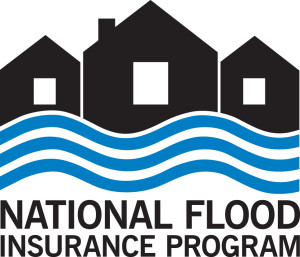The Coverage Limits Under the National Flood Insurance Program

TIP: A flood insurance policy under the NFIP does not provide coverage for any damage that has not been caused by floodwaters.
It seems that people who live along the Atlantic Ocean and Gulf of Mexico coasts of the United States have to endure hurricanes and tropical storms almost throughout the year. The Atlantic hurricane season lasts for about six months of the year from June till the end of November and peaks during the middle of September. As the Atlantic hurricane season tapers off, storm activity starts to peak in the Gulf of Mexico coast.
Areas in coastal states such as North Carolina, South Carolina, and Florida are drenched in rain during these seasons and houses can sustain flooding damages worth thousands of dollars. Most conventional homeowners’ policies do not cover flood damage. So if you live in a flood-prone area, you will need to scout for alternative insurance options to protect your house.
The National Flood Insurance Program (NFIP)
As per the law, individuals who own real estate properties in high-risk flood areas and have secured mortgages from federally regulated lenders must compulsorily buy flood insurance. The official site of the NFIP defines a high-risk flood area as one where there is 25 percent or 1 in 4 chance of heavy flooding during the tenure of a conventional 30-year mortgage. The site also guides homeowners who want to find out if their properties lie in such risky areas. This insurance has to be bought from a lender.
The Scope of Coverage of a Flood Insurance Policy
A flood insurance policy however, covers certain damages and does not cover some others. It covers damage to the building that has been insured and its foundation, the electrical and plumbing works and the HVAC system installed therein, essential appliances like refrigerators and kitchen stoves, built-in appliances such as dishwashers, and permanent installations like carpeting over an unfinished floor, cabinets, panels, and wallboards.
The insurance policy also covers water damage caused by floods to garages within the premises but not attached to the building. There is limited coverage for basements and crawl spaces. Homeowners can also file claims under this policy to cover the costs of removing the debris dumped by floodwaters.
The flood insurance policy covers some contents inside the insured building like valuable and original artwork and expensive collections like furs for an amount up to $2,500; air conditioners; portable appliances like ovens, dishwashers, freezers, washers, and dryers; and personal items like clothing and furniture.
What does a Flood Insurance Policy not Cover?
A flood insurance policy under the NFIP does not provide coverage for any damage that has not been caused by floodwaters. For instance, the policy does not cover water damage from sewer backup caused by blocked drains that the homeowner could have avoided. Similarly, it is assumed that homeowners should proactively adopt measures to prevent the growth of mold and mildew and so a flood insurance policy does not cover the damages caused by such developments. The policy also does not cover the damage to fragile items like currency, valuable documents like stock and bond certificates, and precious metals that the homeowner should and could have safeguarded.
Knowing about the coverage limits of a flood insurance policy under the NFIP helps homeowners build a layer of security around their precious homes.
